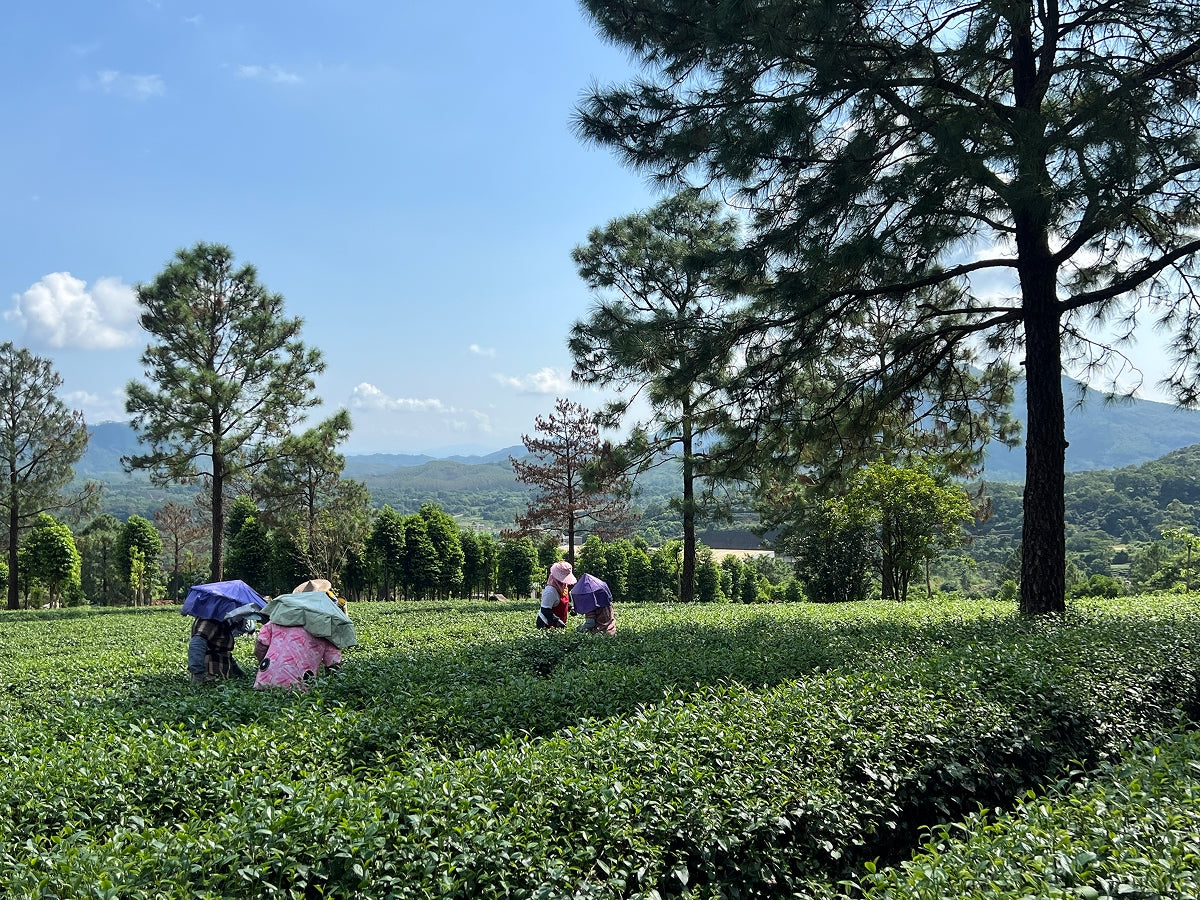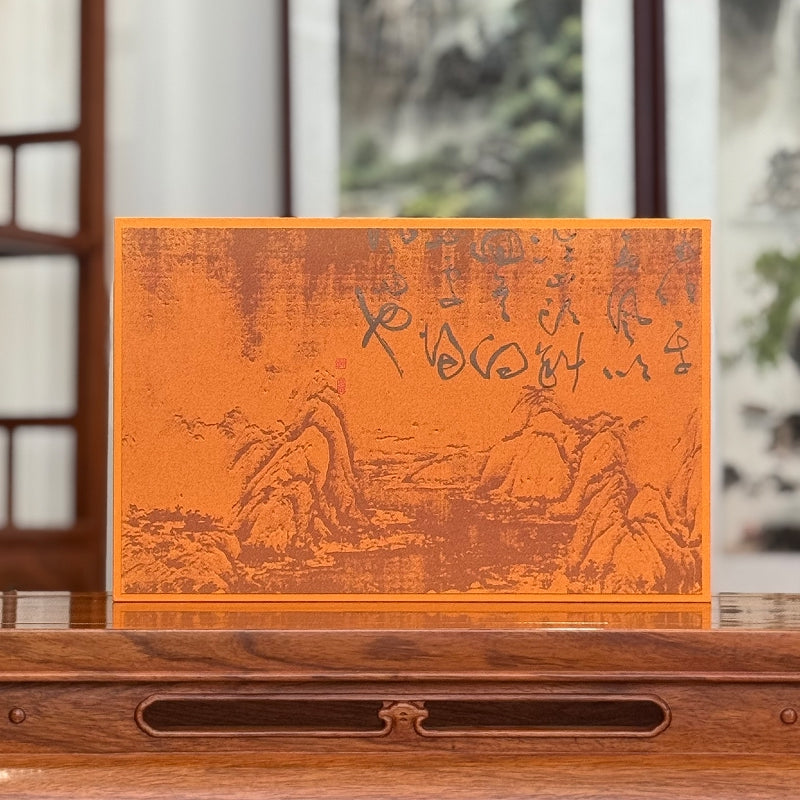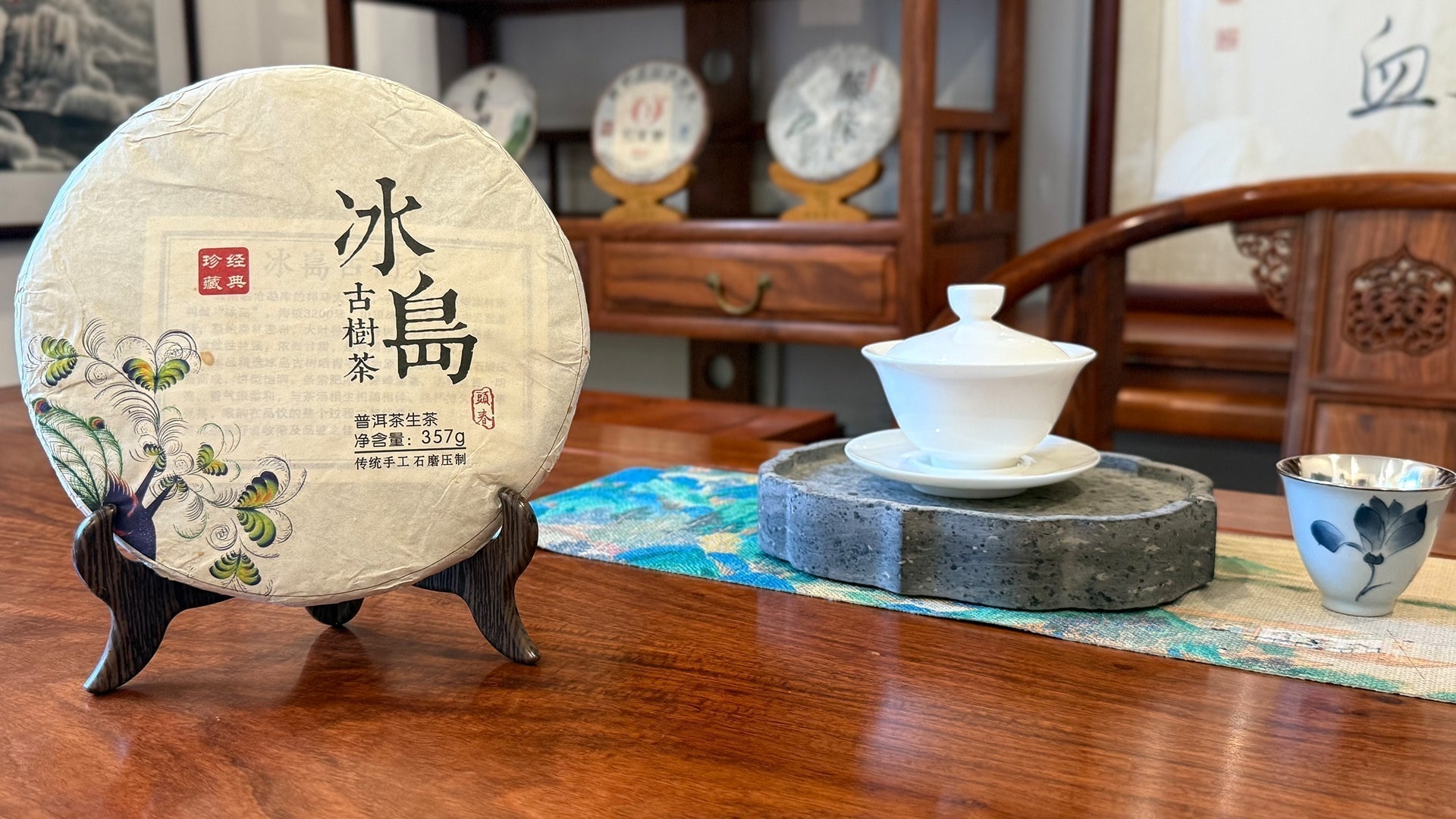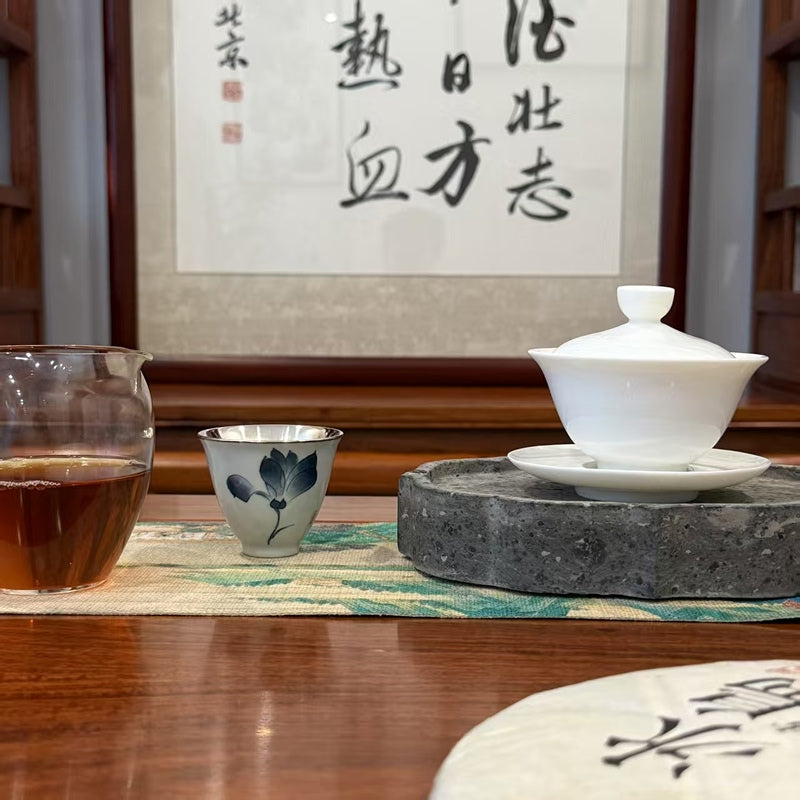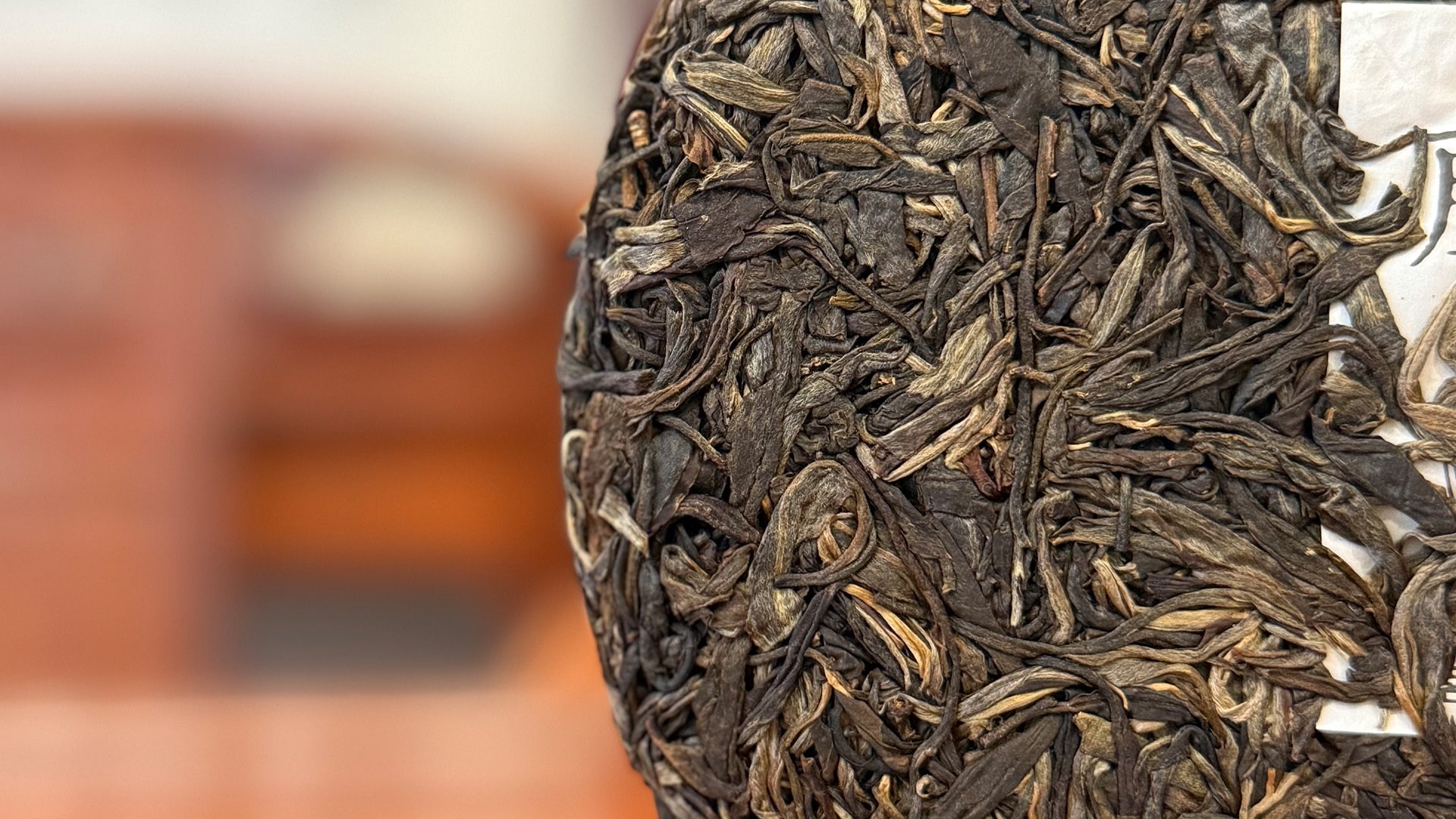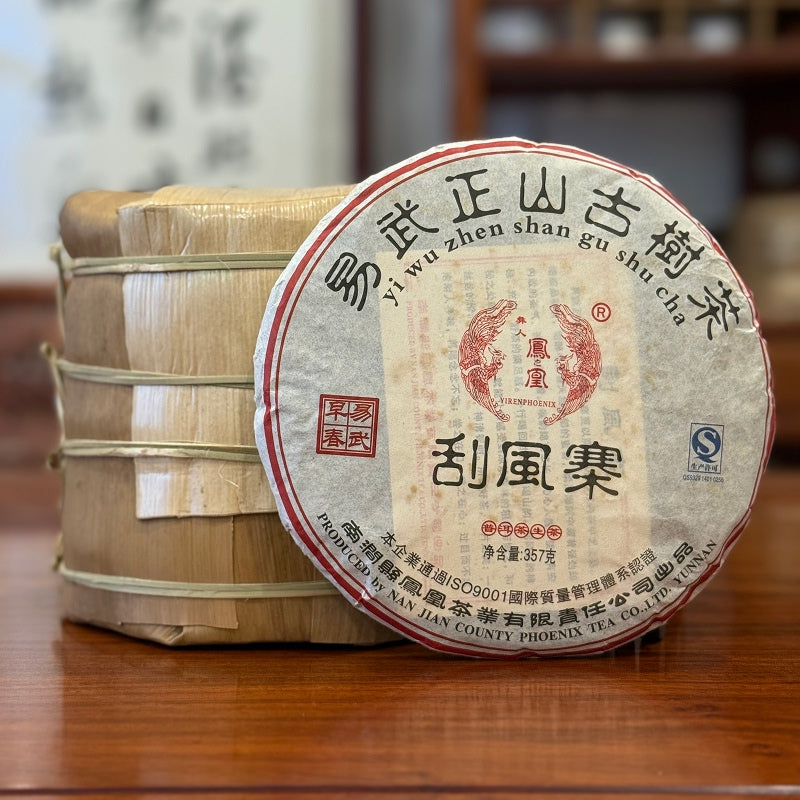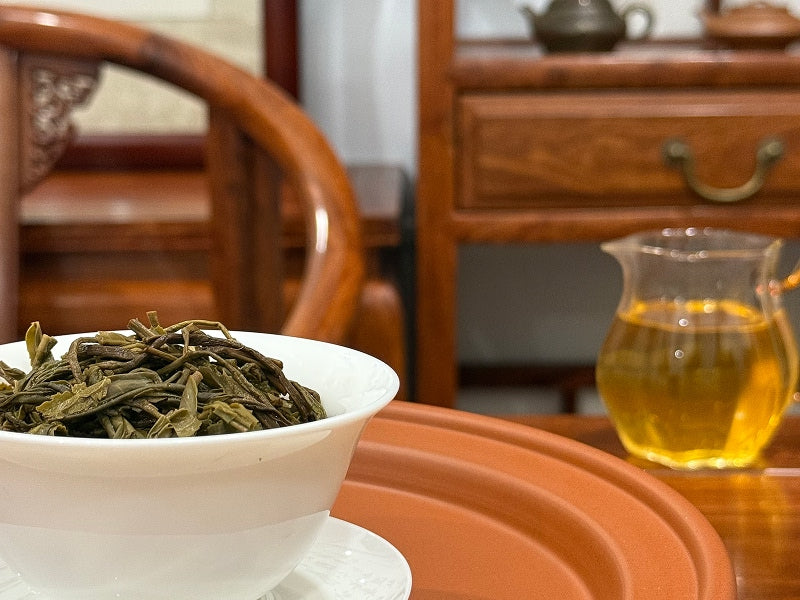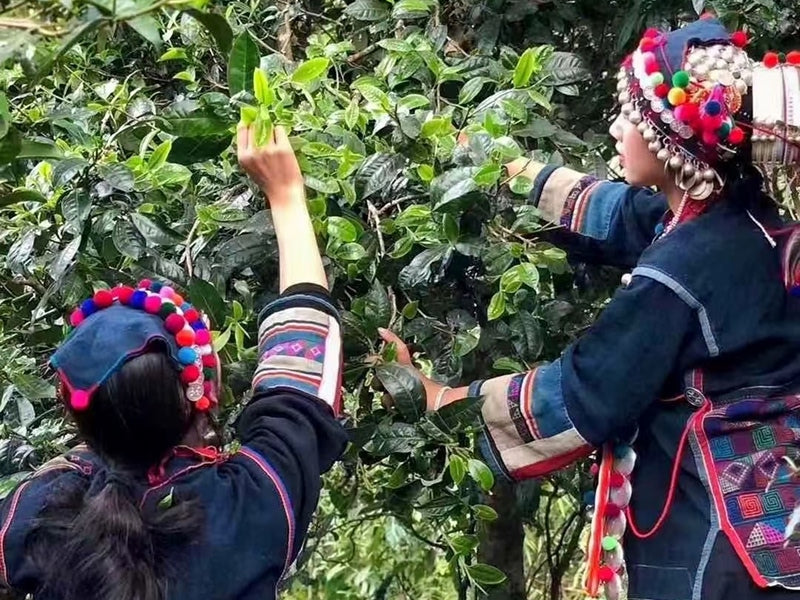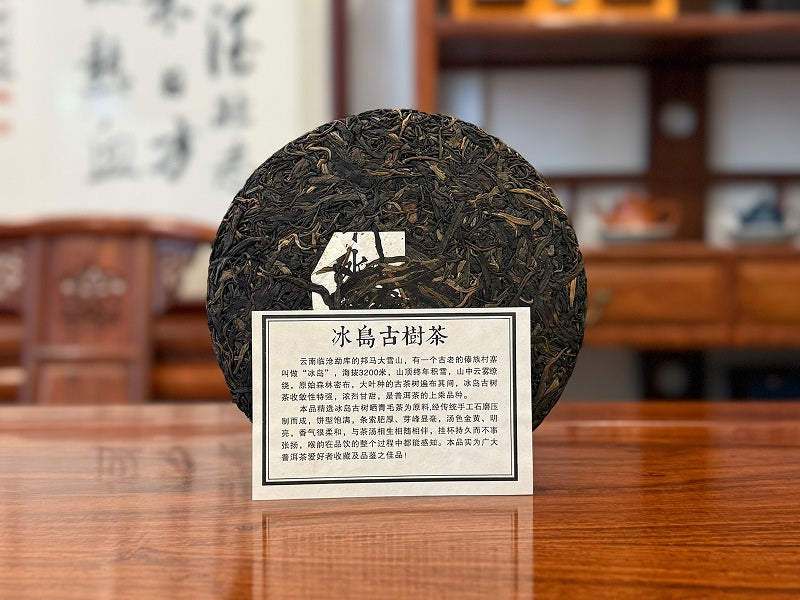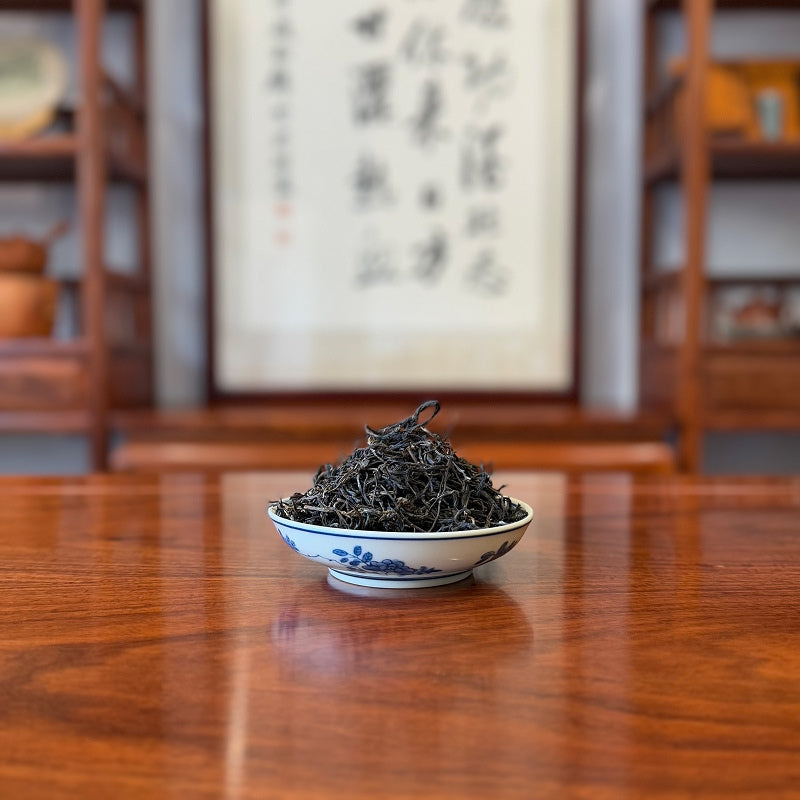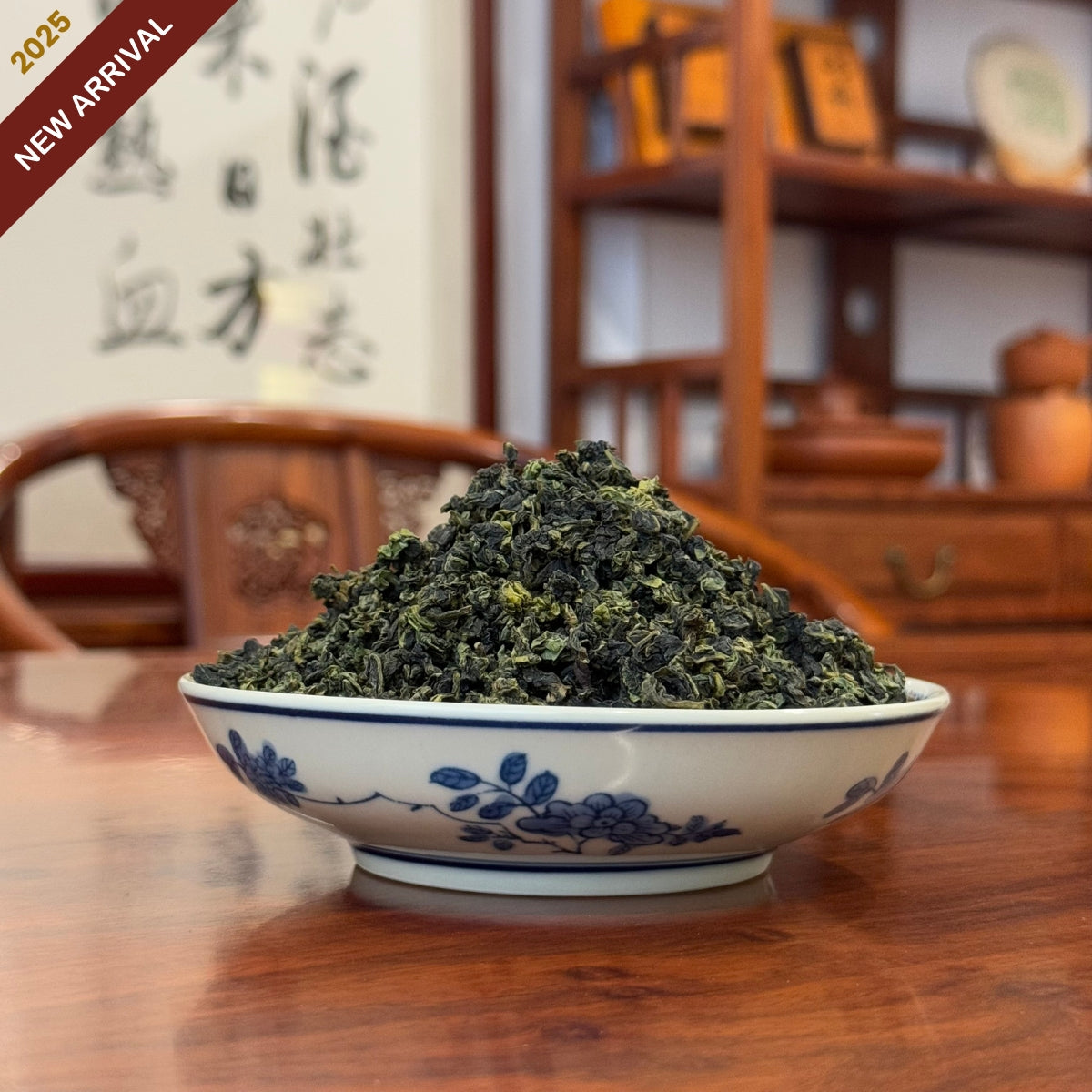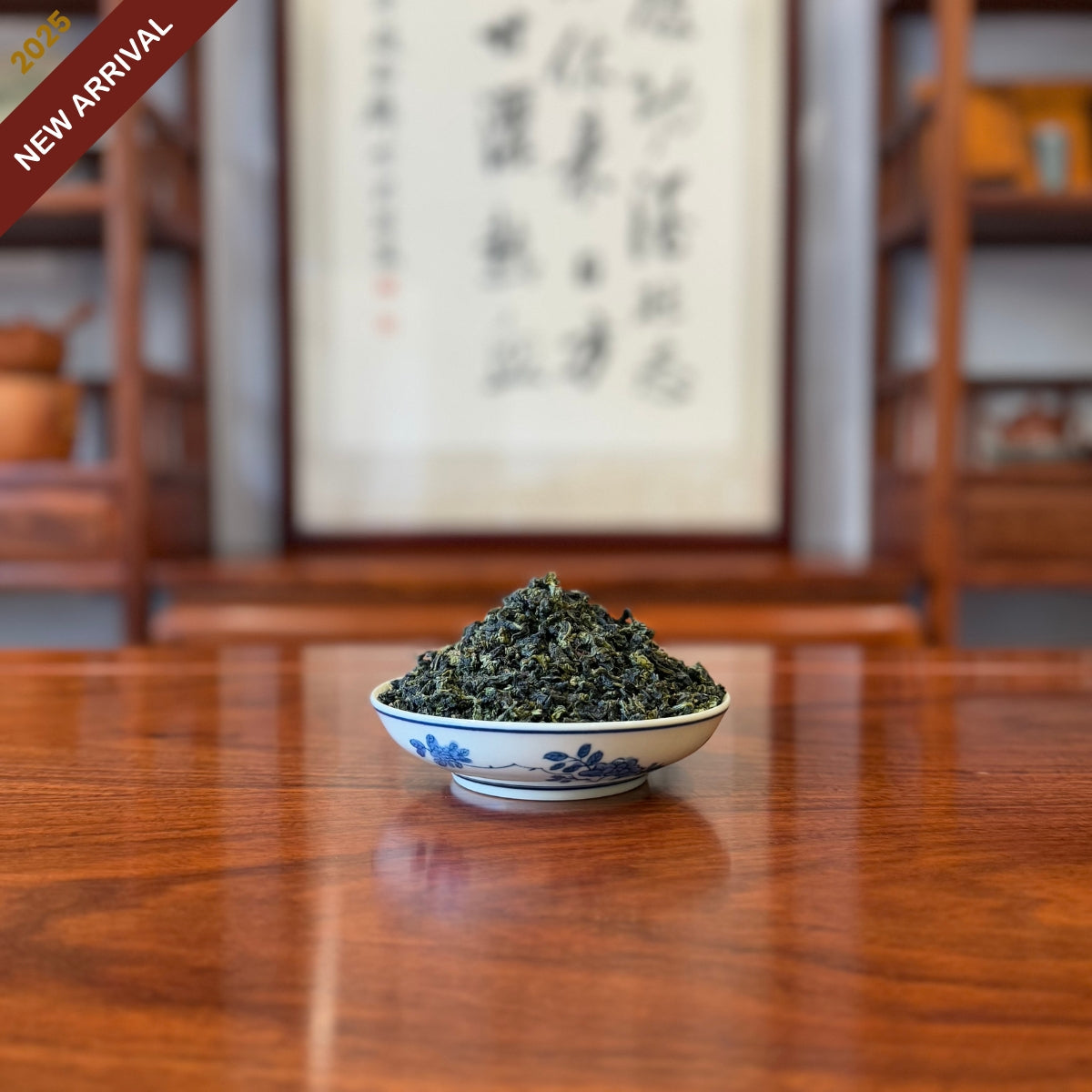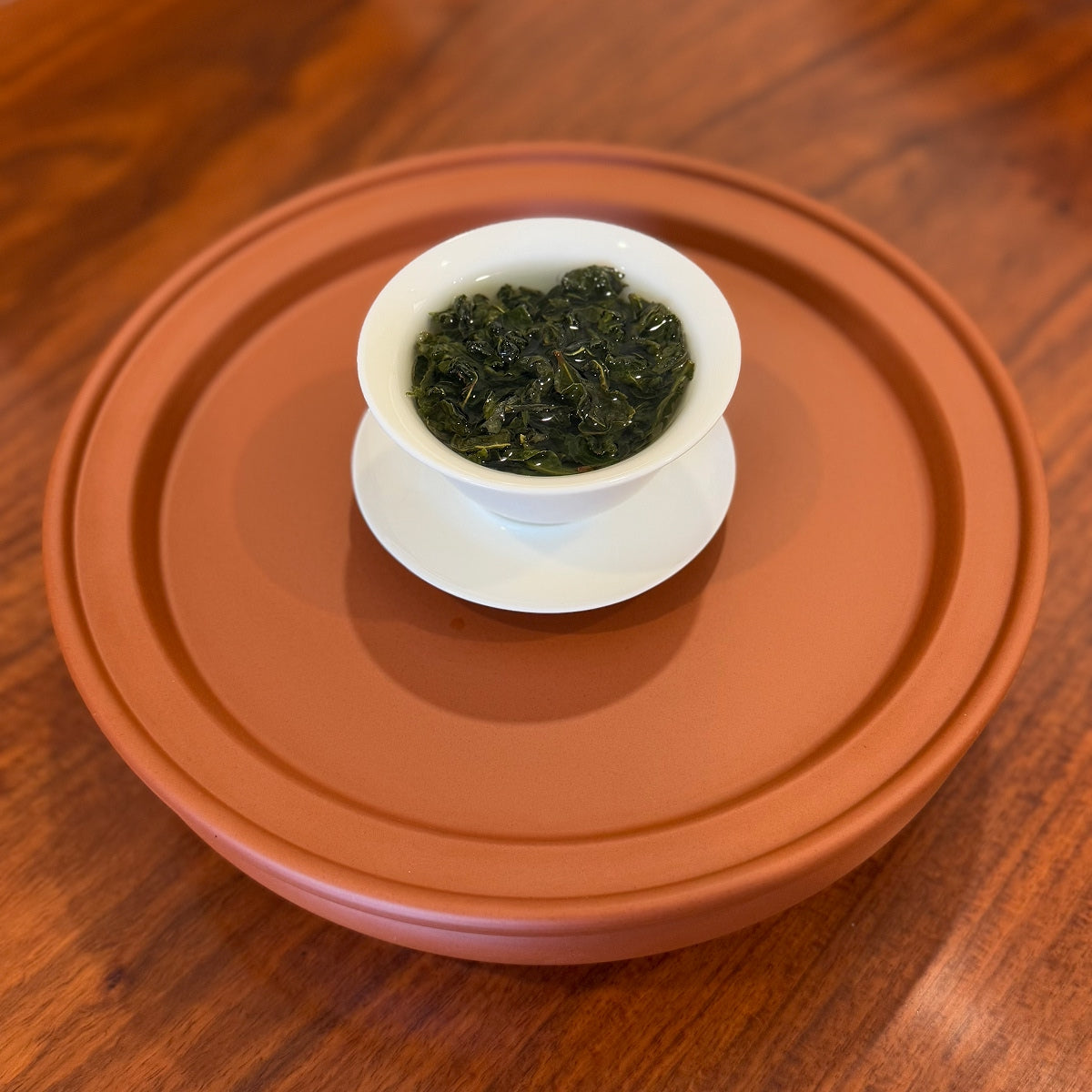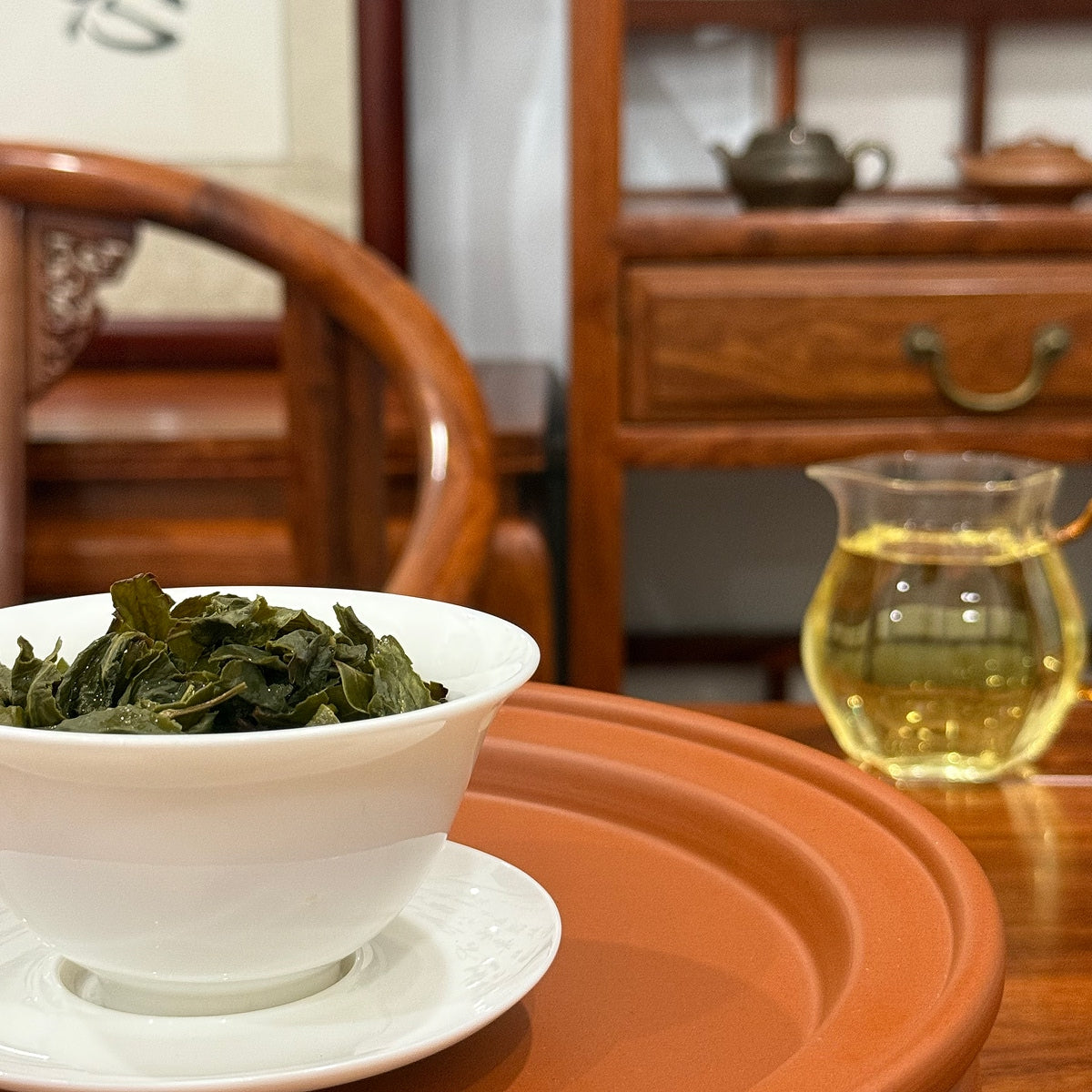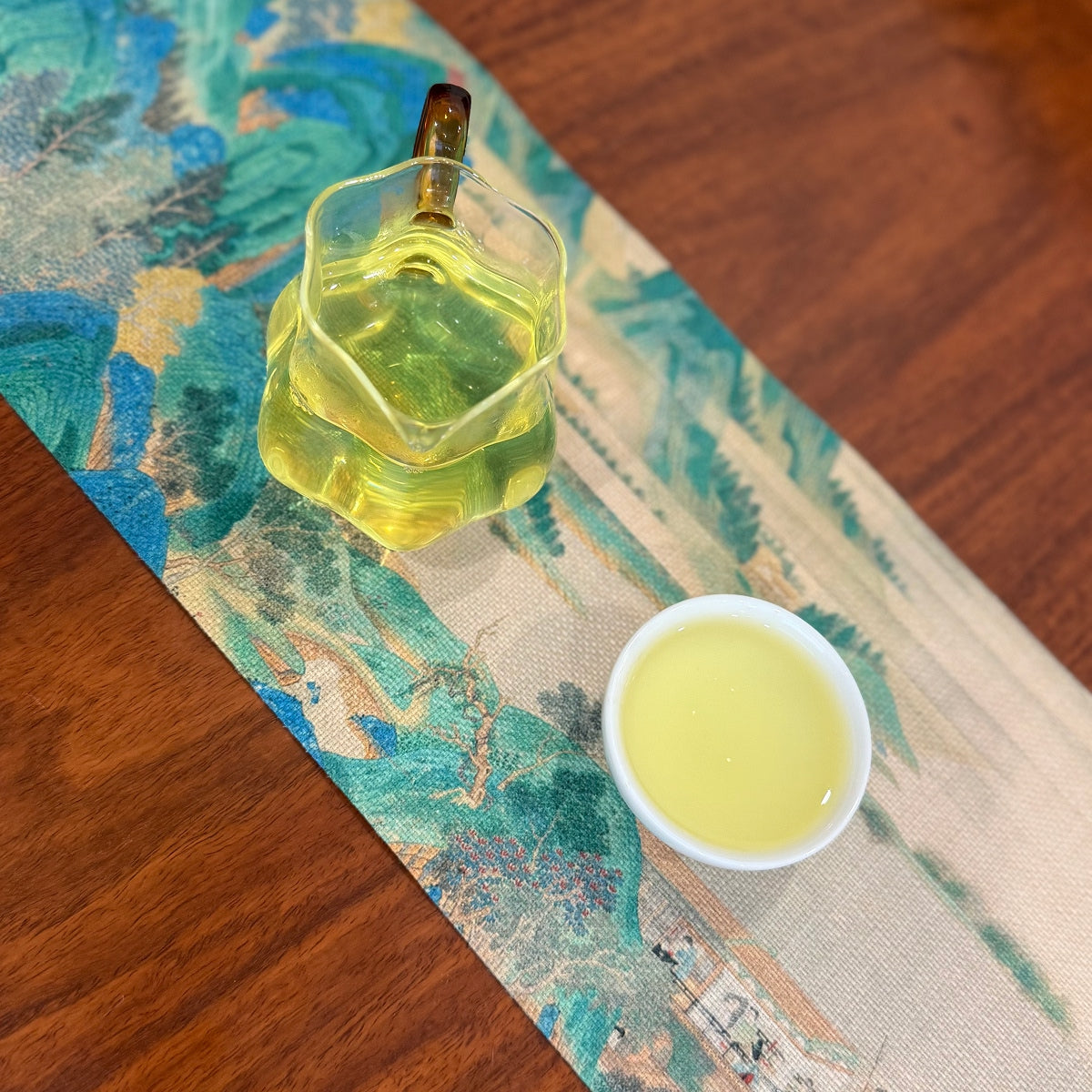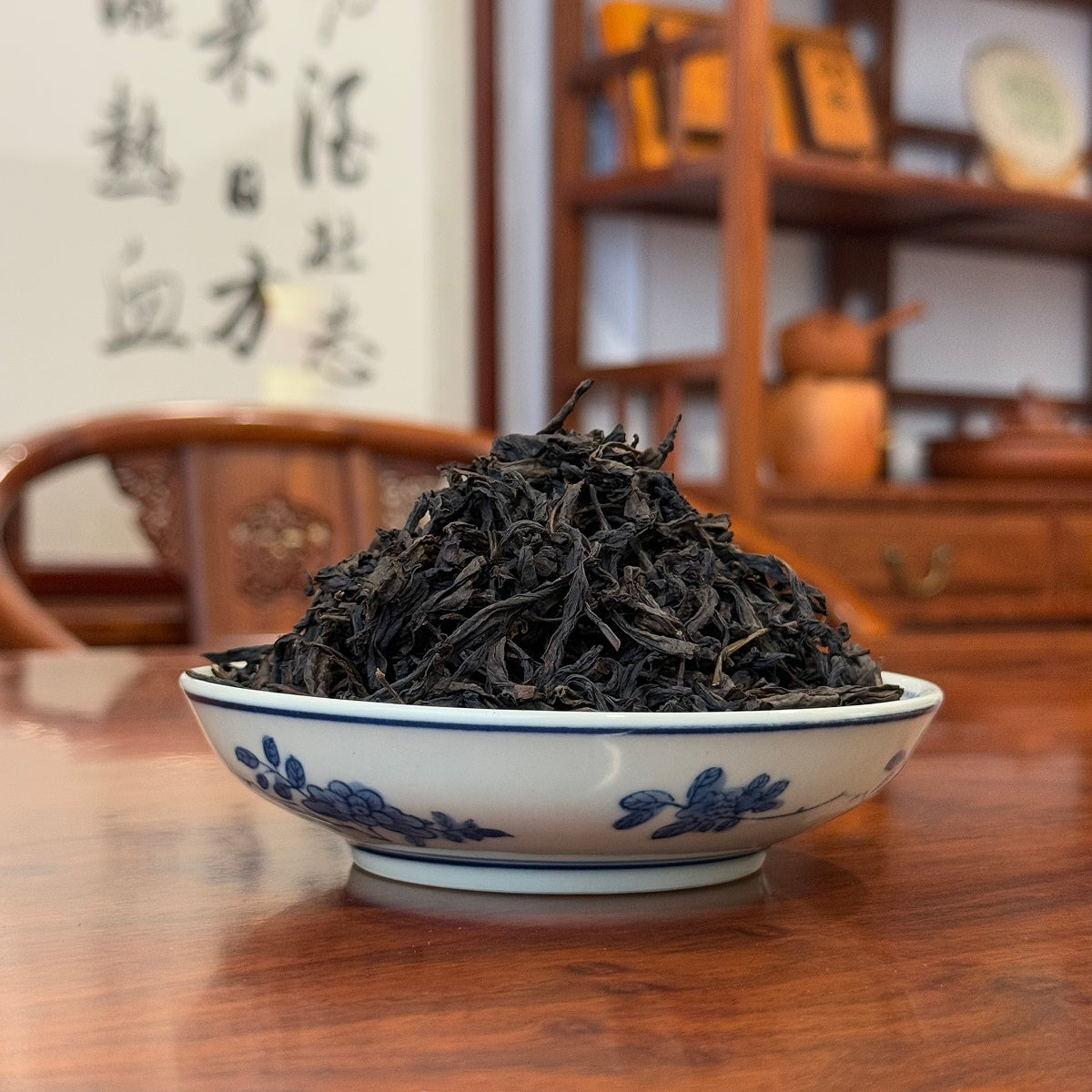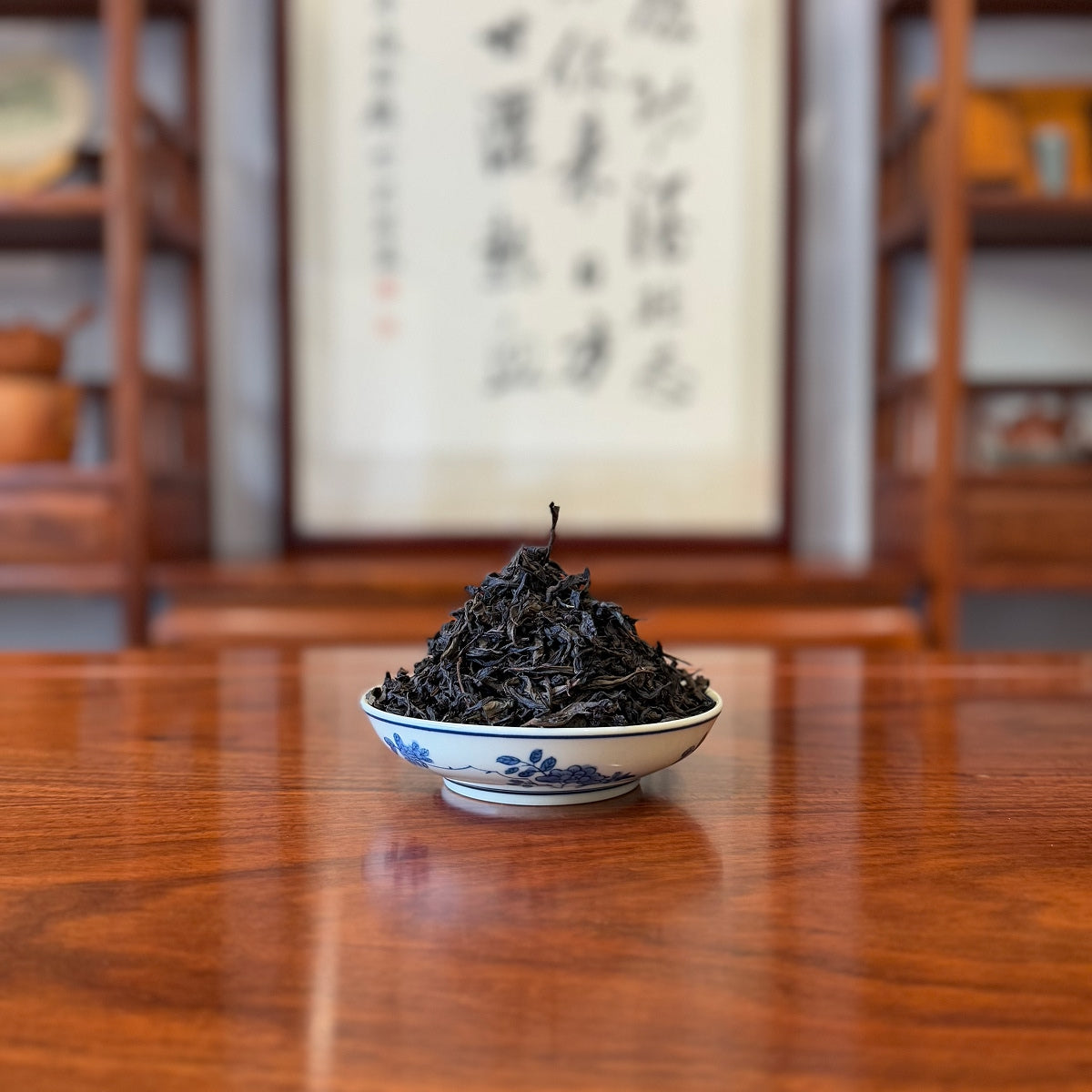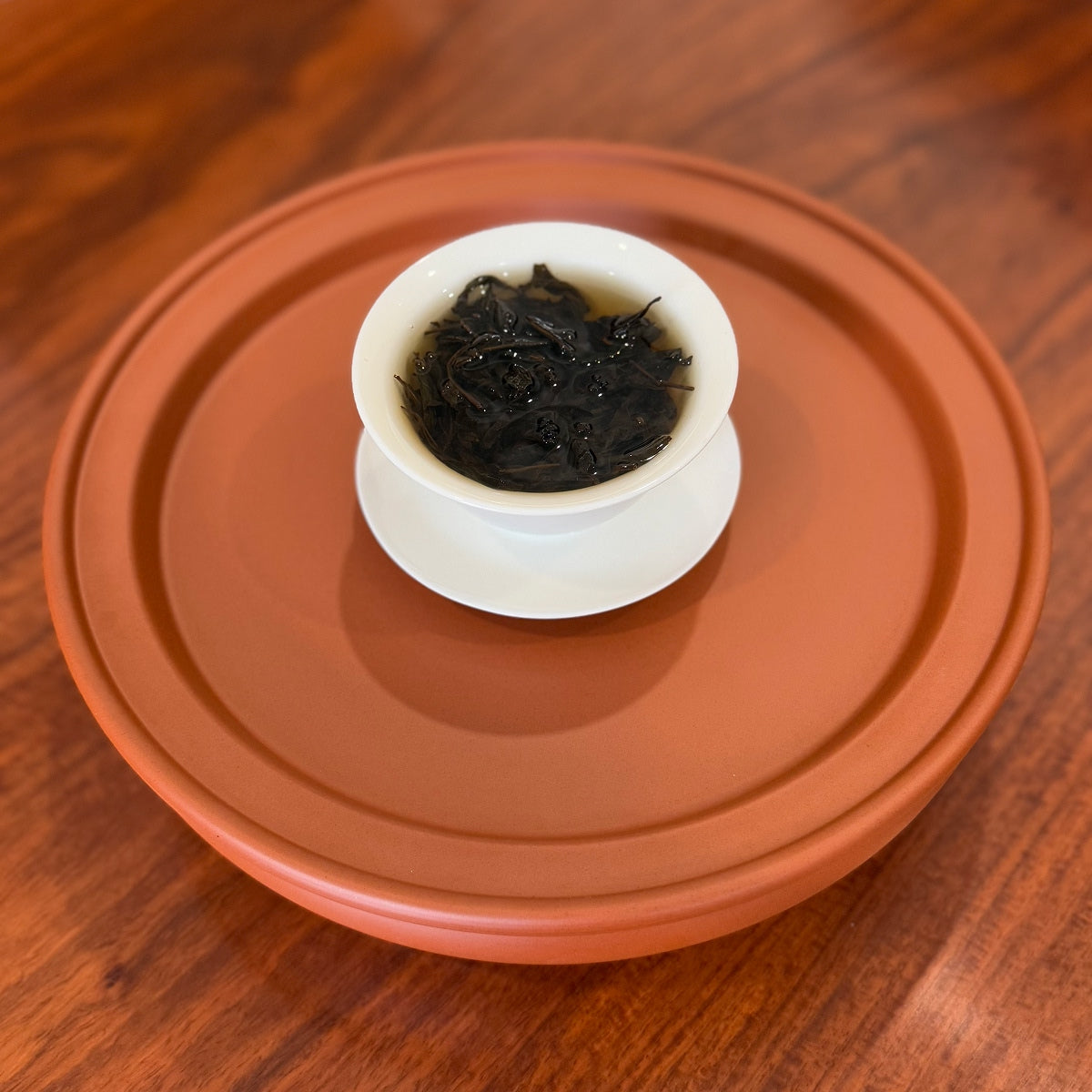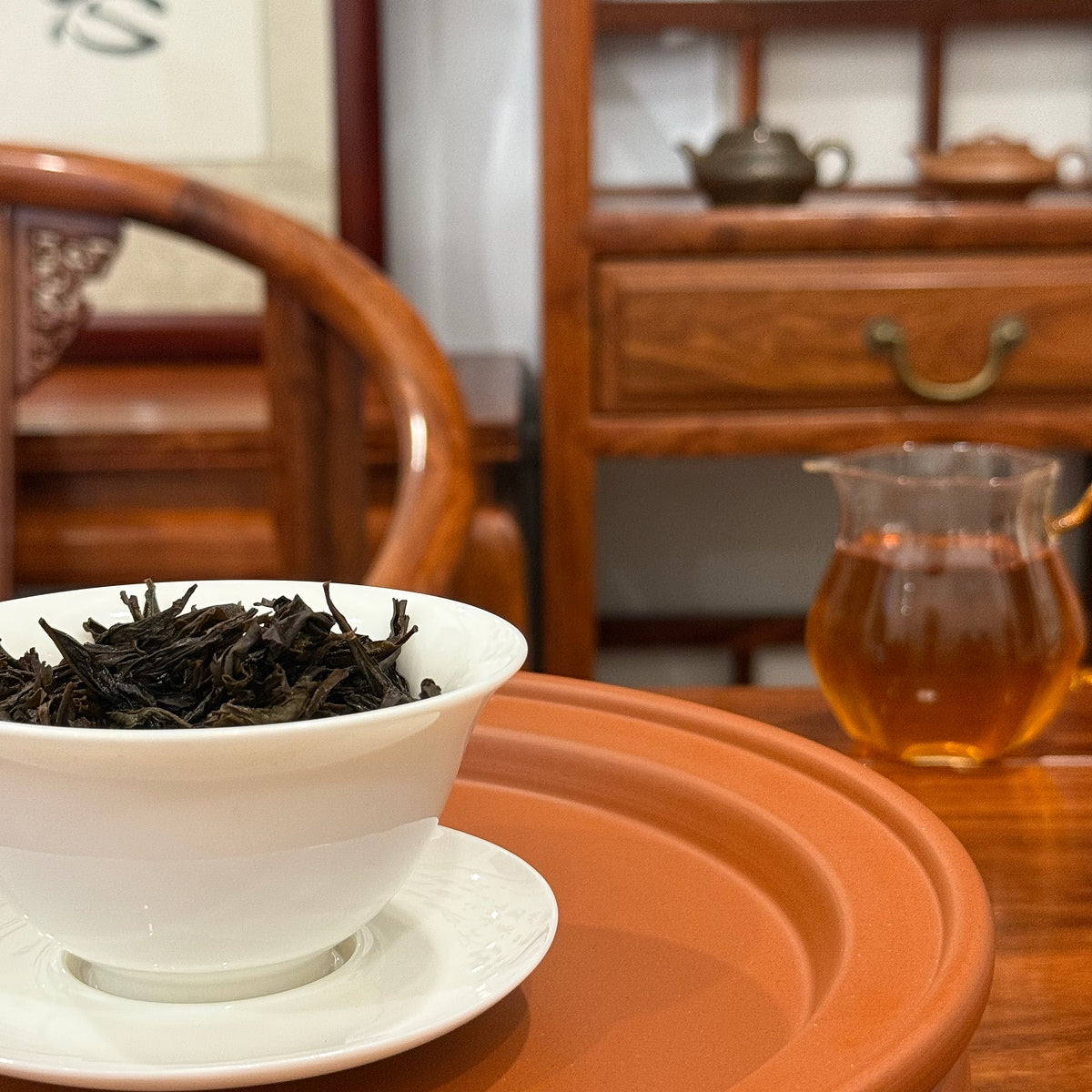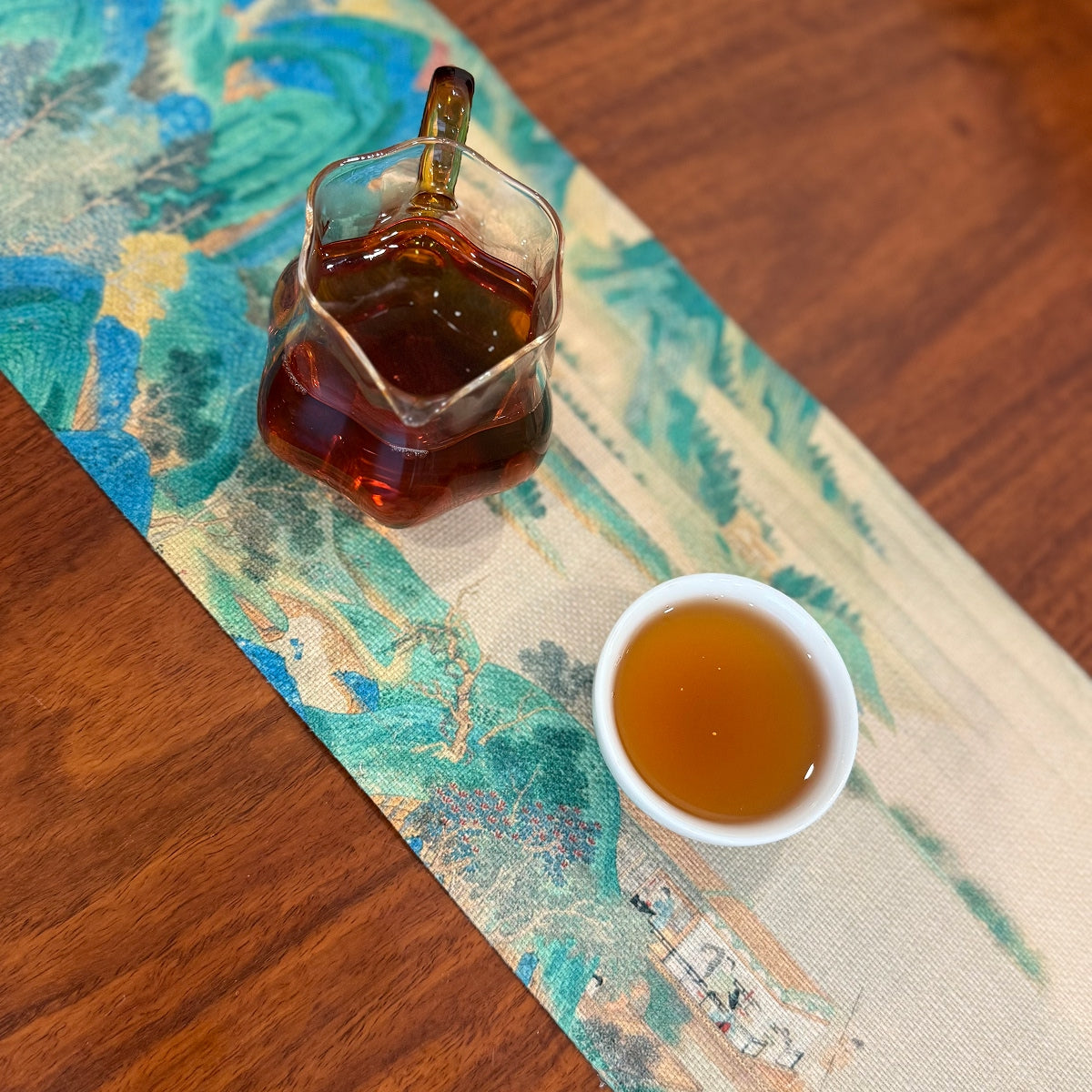Das Verständnis der Pu-Erh-Teesorten und des Unterschieds zwischen rohem und reifem Pu-Erh führt uns zum nächsten wichtigen Schritt – der Auswahl der richtigen Pu-Erh-Teeform für Ihr tägliches Trink- und Aufbewahrungserlebnis.

Als direkter Ausdruck dieses einzigartigen Tees fungiert seine Form als entscheidende Brücke zwischen Teeessenz und täglichem Genuss. Die Teeform beeinflusst Alterungsgeschwindigkeit, Verwendbarkeit, Lagerungsweisen, Brüheffizienz und kulturelle Rituale. Die Wahl der richtigen Pu-Erh-Teeform verleiht Ihrem Tee-Lebensstil Tiefe und Freude.
Die Pu-Erh-Teekollektion der Chinese Tea Group bietet eine große Vielfalt an Pu-Erh-Teesorten, die jeweils deutlich mit Herkunfts- und Geschmacksdetails gekennzeichnet sind, damit Sie die Welt des Pu-Erh-Tees selbstbewusst erkunden können.
Einen umfassenden Leitfaden finden Sie unter „ Pu-Erh-Tee kaufen – Ein Leitfaden zu Chinas einzigartigem Tee“.
Loser Pu-Erh-Tee

(Loseblatt-Roh-Pu-Erh-Tee mit Teelikör)
Loser Pu-Erh-Tee ist die ursprünglichste und natürlichste Form, da die Teeblätter intakt bleiben. Aufgrund seiner größeren Oberfläche und besseren Belüftung reift loser Pu-Erh-Tee schneller und gleichmäßiger als gepresster Tee.
Diese Form ist praktisch für den direkten Gebrauch, eignet sich für das schnelle tägliche Aufbrühen und bietet eine flexible Kontrolle über Teemenge und -stärke.
Der Nachteil besteht darin, dass es mehr Lagerraum benötigt, sich weniger für die langfristige Sammlung eignet und eine geringere Liquidität auf dem Sekundärmarkt aufweist.
Komprimierter Tee

Gepresster Pu-Erh-Tee wird hergestellt, indem lose Blätter weich gedämpft und in spezielle Formen gepresst werden – eine traditionelle Technik, die auf die Qianlong-Ära der Qing-Dynastie (Ende des 18. bis Anfang des 19. Jahrhunderts) zurückgeht.
Zu den gängigen komprimierten Pu-Erh-Teesorten gehören:
Pu-Erh-Teekuchen (Cha Bing)
Pu-Erh-Teekuchen sind die klassischste und repräsentativste Form von komprimiertem Pu-Erh. Ihre runde Form, die auf das Design der alten Teehändler zurückgeht, erleichtert den Transport, das Stapeln und das Abmessen und symbolisiert das östliche kosmologische Konzept des „runden Himmels“.
Das Standardgewicht beträgt 357 Gramm pro Kuchen, wobei sieben Kuchen eine „Zange“ bilden. Diese traditionelle Größe hat sich bis heute gehalten, weshalb Pu-Erh-Teekuchen in China allgemein als „Sieben-Söhne-Kuchen-Tee“ bekannt sind.
Als gängige Sammlerform genießen Pu-Erh-Teekuchen auf dem Sekundärmarkt höchste Anerkennung und sind von großer kultureller und zeremonieller Bedeutung.
Pu-Erh-Teeziegel
Pu-Erh-Teeblöcke kamen Anfang des 20. Jahrhunderts auf, um den Bedarf für Ferntransporte, Massenhandel und Grenzaustausch zu decken. Die meist rechteckigen oder quadratischen Formen sind sauber, fester gepresst als Blöcke und weisen eine dichtere Struktur und eine höhere Druckfestigkeit auf.
Ziegel verkörpern die östliche Philosophie der „quadratischen Erde“ und spiegeln Zweckmäßigkeit und kulturelle Ideale wider.
Der Markt für Pu-Erh-Teeblöcke ist in letzter Zeit zurückgegangen. Im Vergleich zu losem Tee und übermäßig kompakten Blöcken bevorzugt der Markt mäßig komprimierte Teekuchen, die leichter zu lagern sind und gleichmäßiger reifen.
Tuocha-Tee
Tuocha-Tee entstand in der späten Qing-Dynastie (um 1900) und wurde von den Teehändlern der Xiaguan aus Yunnan für die tibetische Teekarawanenroute kreiert. Er hat eine schalenförmige Form, einen flachen Boden und eine leicht konkave Oberseite, lässt sich leicht stapeln und eignet sich für feuchtes, kaltes Hochlandklima.
Die Kompression ähnelt Ziegelsteinen und lässt sich ohne Messer nur schwer aufbrechen. Trotz seiner langen Geschichte und lokalen kulturellen Bedeutung ist er aufgrund seiner Unannehmlichkeiten beim Aufbrühen heute weniger beliebt, insbesondere bei jüngeren Teetrinkern.
Mini-Pu-Erh-Tee

Zu den Mini-Pu-Erh-Komprimierten gehören Dragon Balls, Mini-Tuocha, Mini-Kuchen und Mini-Bricks, die vor Kurzem aus traditionellem komprimiertem Tee entwickelt wurden.
Diese kleinen, tragbaren Formen sind für Einzelportionsstücke oder Kugeln konzipiert und sorgen für einen erheblich höheren Komfort beim täglichen Trinken und Teilen.
Mini-Presstee behält das Lager- und Alterungspotenzial von Presstee, hat aber einen begrenzten Wert auf dem Sekundärmarkt und ist hauptsächlich für den täglichen Konsum und gelegentliches Sammeln gedacht.
Übersicht über Pu-Erh-Teesorten

Es gibt sehr unterschiedliche Pu-Erh-Teesorten, wobei jeder Tee seinen eigenen Schwerpunkt auf die Reifegeschwindigkeit, die Zubereitungsfreundlichkeit, die Lagerungsanforderungen und die kulturelle Erfahrung legt.
Loser Blatttee ist von Natur aus locker und eignet sich für eine schnelle Lagerung und flexibles Aufbrühen.
Gepresster Tee bietet ein ausgewogenes Verhältnis zwischen Lagerfähigkeit und Sammlerwert, wobei Teekuchen, Pu-Erh-Teeziegel und Tuocha eine reiche historische und kulturelle Bedeutung haben.
Mini-Teepressen erfüllen die modernen Anforderungen an Mobilität und vielfältige Trinkgewohnheiten.
Das Verstehen und Auswählen der richtigen Pu-Erh-Teesorte ist ein wesentlicher Schritt für den Genuss eines hochwertigen Pu-Erh-Tee-Erlebnisses.
Pu-Erh-Teesorten: Vergleichstabelle

Pu-Erh-Teesorten: Schnellvergleich
1. Lose Pu-Erh-Blätter
- Alterungspotenzial: ★★★★☆
- Tragbarkeit: ★★☆☆☆
- Brühkomfort: ★★★★★
- Speichereffizienz: ★★☆☆☆
- Sammelbarkeit: ★★☆☆☆
2. Teekuchen (Cha Bing)
- Alterungspotenzial: ★★★★★
- Tragbarkeit: ★★★☆☆
- Brühkomfort: ★★☆☆☆
- Speichereffizienz: ★★★★☆
- Sammelbarkeit: ★★★★★
3. Pu-Erh-Teeziegel
- Alterungspotenzial: ★★★★☆
- Tragbarkeit: ★★★☆☆
- Brühkomfort: ★☆☆☆☆
- Speichereffizienz: ★★★★★
- Sammelbarkeit: ★★★★☆
4. Tuocha-Tee
- Alterungspotenzial: ★★★☆☆
- Tragbarkeit: ★★★★★
- Brühkomfort: ★★☆☆☆
- Speichereffizienz: ★★★★☆
- Sammelbarkeit: ★★☆☆☆
5. Mini-Komprimierung (Dragon Balls usw.)
- Alterungspotenzial: ★★☆☆☆
- Tragbarkeit: ★★★★★
- Brühkomfort: ★★★★★
- Speichereffizienz: ★★★☆☆
- Sammelbarkeit: ★☆☆☆☆
Kaufen Sie vertrauensvoll bei vertrauenswürdigen Verkäufern

Wenn Sie sich für authentischen Pu-Erh-Tee entscheiden, wählen Sie Teehändler aus, die detaillierte Produktinformationen, eine klare Rückverfolgbarkeit der Herkunft und fachkundige Beratung bieten.
Bei der Chinese Tea Group umfasst unsere Pu-Erh-Teekollektion verschiedene Teesorten, Ursprünge und Jahrgänge, die alle sorgfältig ausgewählt wurden, um Qualität und Authentizität zu gewährleisten und Ihnen zu helfen, sichere Entscheidungen zu treffen.
Häufig gestellte Fragen (FAQ)

F: Warum sollte man komprimierten Pu-Erh-Tee wählen?
A: Komprimierter Tee, wie Teekuchen, Teeziegel und Tuocha, lässt sich bequem lagern und transportieren. Seine dichte Struktur trägt dazu bei, dass der Tee gleichmäßig reift und mit der Zeit komplexe Aromen entwickelt. Für Sammler und Liebhaber der Teereifung haben komprimierte Formen einen hohen kulturellen und historischen Wert.
F: Wie bewahrt man losen Pu-Erh-Tee am besten auf?
A: Loser Tee ist aufgrund seiner größeren Oberfläche und Offenheit anfälliger für Feuchtigkeit und Gerüche. Lagern Sie ihn an einem trockenen, gut belüfteten und geruchsfreien Ort und vermeiden Sie direkte Sonneneinstrahlung und Feuchtigkeit. Atmungsaktive Papiertüten oder Holzkisten eignen sich gut, um die natürliche Alterung zu erhalten.
F: Wann ist Dragon Balls (Mini Compressed) Tee am besten geeignet?
A: Dragon Balls und andere Mini-Kompressentees sind für den Einzelportionsgebrauch konzipiert. Ihre kleine, tragbare Größe macht sie ideal für Reisen, zum Verschenken oder für Teetrinker, die bequem verschiedene Teesorten probieren möchten.
F: Wie unterscheidet sich die Alterungsgeschwindigkeit bei verschiedenen Pu-Erh-Teesorten?
A: Lose Pu-Erh-Blätter reifen aufgrund der besseren Luftzirkulation schneller und gleichmäßiger. Komprimierte Tees reifen aufgrund ihrer kompakten Struktur langsamer und gleichmäßiger. Mini-Komprimierte Tees liegen irgendwo dazwischen und bieten ein ausgewogenes Alterungspotenzial mit praktischer Handhabung.
Zusammenfassung und nächste Schritte

Pu-Erh-Teesorten gibt es in großer Vielfalt. Jede Sorte legt Wert auf Reifegeschwindigkeit, Zubereitungskomfort, Lagerungsanforderungen und kulturelle Erfahrung. Loser Tee bietet eine natürliche Offenheit, die sich für eine schnellere Reifung und flexible Zubereitung eignet. Komprimierte Teesorten bieten ein ausgewogenes Verhältnis zwischen Lagerung und Sammelwert. Teekuchen, Pu-Erh-Teeziegel und Tuocha haben jeweils eine tiefe historische und kulturelle Bedeutung. Kleine komprimierte Teesorten erfüllen moderne Bedürfnisse nach Transportfähigkeit und Abwechslung.
Das Verstehen und Auswählen der richtigen Pu-Erh-Teesorte ist ein wichtiger Schritt, um ein hochwertiges Pu-Erh-Tee-Erlebnis zu genießen.

